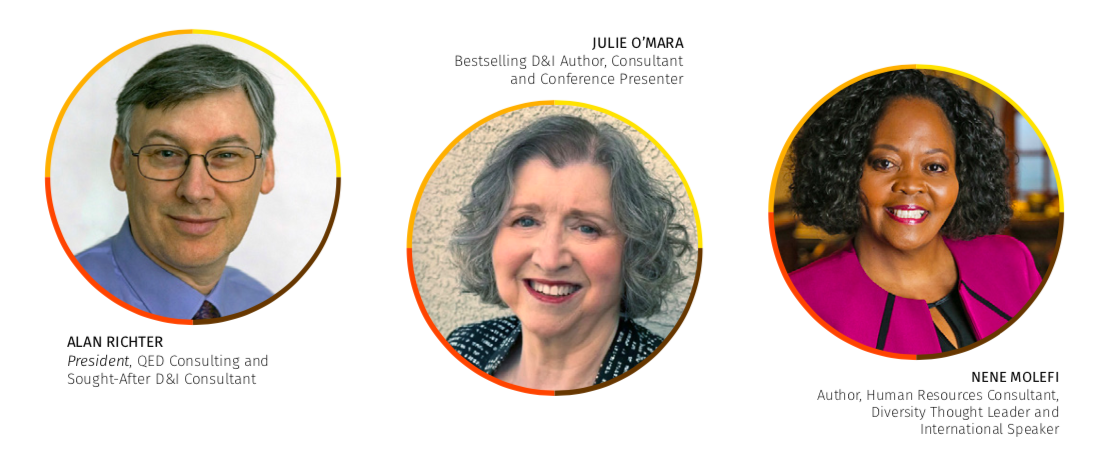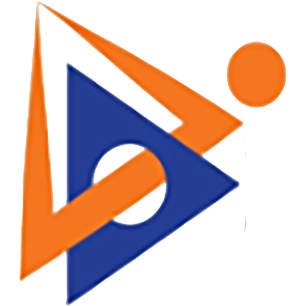By Dan Holly
Alan Richter and Julie O’Mara can remember the moment when they decided to create a set of bench marks to measure diversity and inclusion around the world. They were at a meeting discussing diversity and inclusion practices of the Tennessee Valley Authority, which had done original research in 1993 in that field. But the conversation centered on diversity practices only in the United States.
“We need to create global resources for this,” O’Mara recalls saying to Richter, who was sitting next to her. Neither remembers exactly when the conversation took place, nor where the meeting was held.
But they remember the outcome of the conversation: They decided to develop a tool – and offer it for free – that would help the diversity and inclusion field move to a more systemic change approach. With the help from 47 expert panelists from around the world, they produced the Global Diversity & Inclusion Benchmarks: Standards for Organizations Around the World (the GDIB).
That was in 2006. Sixteen years and four editions later, the publication – now known as Global Diversity, Equity and Inclusion Benchmarks (GDEIB) – is used by hundreds of organizations around the world. Richter, president of QED Consulting and sought-after D&I consultant, and O’Mara, bestselling D&I author, consultant and conference presenter, have received many awards and recognitions for their work.
By the 2021 edition, Richter and O’Mara were joined by Nene Molefi, an author, human resources consultant, diversity thought leader and international speaker from South Africa. Molefi had been an expert panelist for many years prior to being invited to be a coauthor.
The bench marks are used by organizations ranging from the National Basketball Association in the United States to the City of Vancouver in Canada to the Heineken beer company in the Netherlands. The GDIB/GDEIB has received widespread praise from around the world.
“Certainly it will not solve historical issues overnight,” said Cristina Carvalho of InterElo Consultoria in São Paulo, Brazil, “but the GDIB can support organizations and broaden their view, place points of attention on the map, and develop strategies to speed this movement up in our society.”
Elisabeth Kelan, professor at the Essex Business School at the University of Essex in the United Kingdom said this: “The most common question I am asked about equality, diversity, and inclusion is ‘what do leading organizations do?’ Behind this question is the desire to find out how your organization is doing and more importantly how to improve. The GDEIB fulfills this need like no other resource.”
For the NBA, “The GDIB has been an invaluable contribution to our Playbook as we work to further integrate D&I into our efforts across our leagues and at each of our teams,” said Oris Stuart, the association’s chief diversity and inclusion officer. “The GDIB provides a clear view for each enterprise to see where it is currently on the continuum and what to work on to improve and reach the next level.”
Since the first publication, the GDEIB’s approach has evolved and grown more nuanced and sophisticated with each edition. The most recent, in 2021, has 275 bench marks for organizations to draw from in crafting their diversity, equity and inclusion practices.
The biggest structural change in the way the GDEIB is produced came in 2017, when the publication was changed from the Diversity Collegium to the then-new Centre for Global Inclusion. The Centre for Global Inclusion was founded on July 5, 2017, specifically to publish the GDEIB. The centre, whose mission is “to serve as a resource for research and education for individuals and organizations in their quest to improve diversity and inclusion practices around the world,” has since grown in scope.
GDEIB is still given away for free, but the authors realized that the costs they were incurring were prohibitive. The centre is a nonprofit organization that can accept sponsorships and donations from anywhere in the world.
GDEIB envisions that its approaches to DEI are meant to have a profound impact. (It says upfront, “Using the GDEIB equips you to take bold action and make a world of difference!)” But the authors make it clear that practicing DEI properly is not simple. (“If you want a quick fix, the GDEIB is not for you!”)
Richter, O’Mara and Molefi are particularly proud of the panel of experts that they use to continually refine and develop their bench marks. The panel of 47 experts who were involved in the 2006 edition has grown to 112 experts from all over the world.
The 2021 edition is perhaps the most changed edition as it is more explicit about the influence of social justice, the accelerated rate of change impacted much by technology – such as AI; and the changing way organizations are structured as a result of the pandemic.
The input from the international panel of experts has been lauded as a big part of the GDEIB’s value. “What sets the GDEIB apart from other D&I maturity frameworks is it is truly global,” said Nancy Ngou, associate partner, EY Strategy & Consulting Co., Ltd, in Tokyo. “Because it is reviewed regularly by DEI experts from around the world, it reflects a true global view, rather than western leaning.”
There are some commonalities among all areas of the world in DEI, Richter said. For instance, gender and generational diversity are a challenge around the globe, he said.
Although there are regional and sector nuances to DEI challenges, the GDEIB is widely applicable across the world. The similarities are more common than one would think, even in countries with very different demographics than the United States, Molefi said. “In South Africa, there are several things that are similar — like structural inequalities and discrimination on the basis of race,” she said. Even though South Africa is ruled by the black majority, the country struggles with equitable representation among Africans, colored and Indian, she said.
Richter, O’Mara and Molefi plan to continue updating the GDEIB and they have no plans to start charging for it. O’Mara said, however, that there are plans to charge for the certification process that is part of the GDEIB.
They are also planning a digital version, Richter said, adding: “The Gen Zs are not opening up PDFs – they want digital access to everything. So that’s where we’re going in the future.”
Go to www.centreforglobalinclusion.org and sign a User Agreement to receive a copy of the GDEIB.









